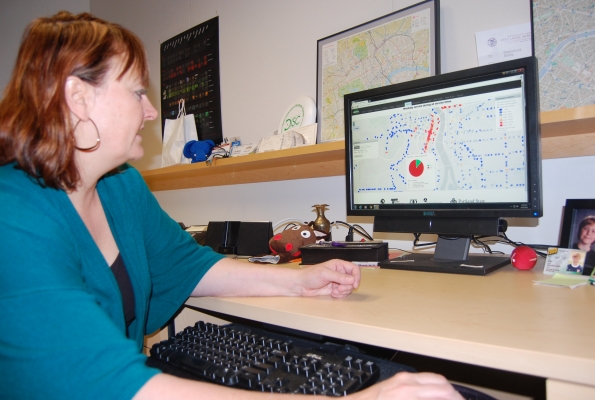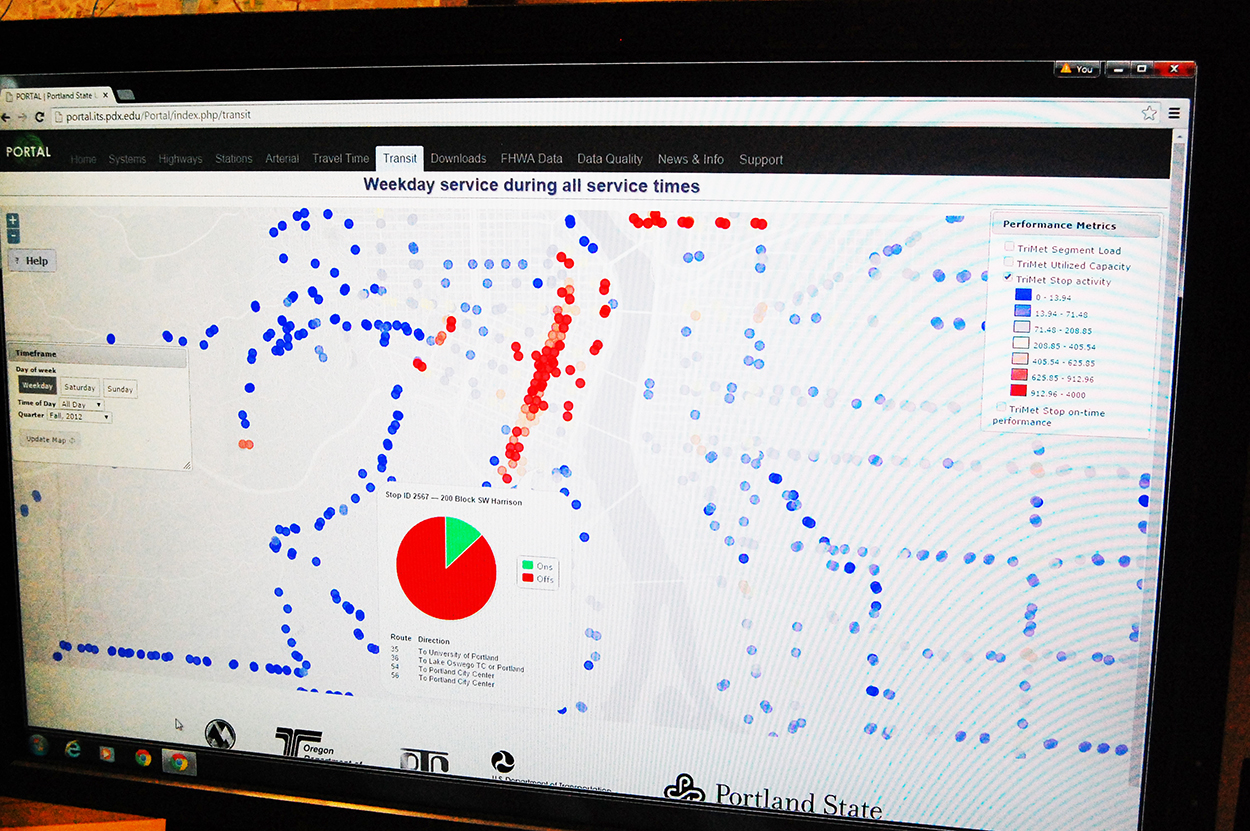New funding brings more of Portal data archive to life

Founded to collect the transportation data created by agencies across the region, Portal had done its job almost too well. The data archive, a program of TREC, had taken in more data than it could make available.
Portal started in 2004 with just one data source: Oregon freeway loop detectors. Over the years, it grew into a truly multimodal data archive, incorporating transit data, traffic signal data, bicycle and pedestrian counts – eight data sources spanning two states and multiple agencies.
Its budget didn’t grow proportionately, however, leaving Portal less able to make use of the data it collected. Portal’s $125,000 in regional transportation money just kept the system running, said Portal director Kristin Tufte. “It was enough money to keep the lights on,” she said.
Given Portal’s potential to help agencies improve operations and researchers to address systemwide issues, that wasn’t enough. The information had to be accessible to make a difference.
A boost in support for Portal is helping to make that possible. With a grant from the Institute for Sustainable Solutions at Portland State, TREC hired a Portal programmer this year to present the data visually.
Though key to Portal’s future, that was only the first step. TREC set to leverage the grant, asking the Metro regional government’s Transportation Systems Management and Operations program to increase its commitment to Portal as well.
In mid-March, the program’s advisory committee announced that it would fund Portal at $200,000 per year, part of $4.6 million awarded for three years of projects around the region.
“Given both the tremendous need to upgrade Portal and the tremendous value of the data, we knew we’d have to make the most out of the ISS support,” said Hau Hagedorn of TREC. “This additional investment brings Portal a long way toward realizing its potential.”
Those visualizations can make a huge difference for users, Tufte said. Instead of sending Tufte requests to query the database, users can see data themselves in a chart or graphic that allows them to spot an anomaly in an instant.
Visualizations also make it easier to communicate travel-time reliability. “Somebody could come to the site and look at their commute to see if it’s getting better or worse,” Tufte said.
For the first time, Portal will present data from Portland’s central traffic signal system. Those data had been accessible only to a few “power users” able to run complex database queries.
Making the data more accessible also opens the door to research from nontraditional transportation disciplines. More research from more angles means new insight to solve tricky transportation problems.
Tufte has outlined tasks the increased funding level could allow Portal to accomplish over the next several years. These include:
- Increasing the frequency of transit data reports from quarterly to daily;
- Displaying data from variable speed and travel-time signs. These data are stored in Portal but not displayed;
- User interface: Allowing users to add comments to the data to give context;
- Displaying Port of Portland data;
- Making a dashboard to give an overview of the current state of the regional transportation system.
The new funding gives Tufte an opportunity to not only get through a backlog of needed upgrades, but to explore innovative, cutting-edge uses for the database in the future. “This really makes a lot of things possible,” she said.

